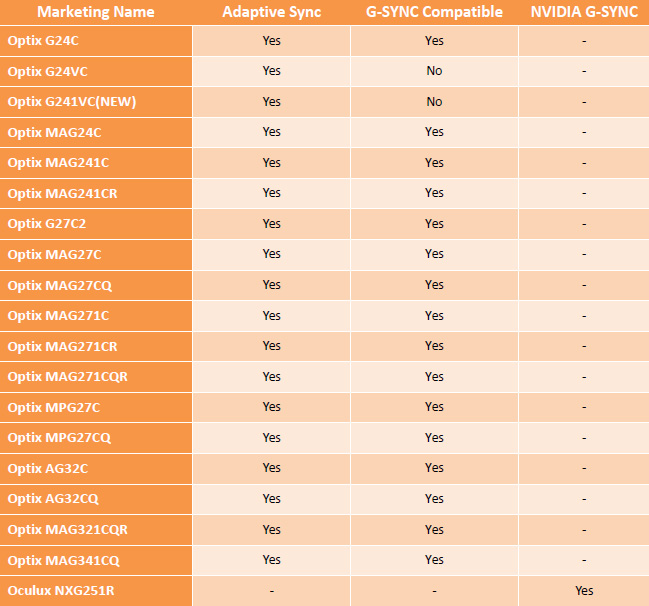Last night time, MSI printed a news post on their web site detailing which of their gaming displays had been “effectively” deemed G-Sync Compatible screens after operating a few of their very own inner assessments on them. This morning, that submit has mysteriously vanished, suggesting one thing could be amiss with both the wording of the submit or the checklist of displays themselves. I’ve reached out to MSI for clarification on this, however for the time being, let’s check out the submit itself, which was fortunately nonetheless open on my telephone browser once I got here to take a look at it this morning – though how a lot inventory we should always put into this checklist now it’s been pulled is up for debate.
I think about the submit’s mysterious disappearance is as a result of MSI are claiming these displays are capital-C “G-Sync Compatible” – an official, Nvidia-certified normal – versus merely G-Sync appropriate with a small-c, which is now technically true of each adaptive sync / AMD FreeSync monitor because of Nvidia’s current driver replace. It’s simply that small-c appropriate screens might not supply nearly as good a G-Sync expertise as capital-C Compatible screens which have gone by means of Nvidia’s personal rigorous testing procedures.
G-Sync, in case you’ve forgotten, is Nvidia’s adaptive refresh fee expertise that helps to get rid of stutter and display screen tearing in addition to a bunch of different issues while you’re enjoying games with an Nvidia graphics card and Nvidia G-Sync-branded gaming monitor. At CES firstly of January, nevertheless, Nvidia introduced that they had been going to start out opening up their beforehand very strict normal in order that avid gamers with Nvidia graphics playing cards and cheaper, adaptive sync screens (i.e: AMD FreeSync displays) might nonetheless get a G-Sync-like expertise after a small driver replace.
However, chances are you’ll recall that none of MSI’s adaptive sync / FreeSync displays have really handed Nvidia’s strict G-Sync Compatible testing course of but, so you may see why MSI’s opening declare about how “Following Nvidia’s announcement of their newest drivers, MSI monitors are effectively G-Sync Compatible!” would possibly increase just a few eyebrows.
Indeed, solely 12 out of round 400 displays examined to this point by Nvidia have obtained official G-Sync Compatible standing, and from the seems to be of issues Nvidia haven’t had any involvement within the making of MSI’s checklist in any way: “At the moment, not all adaptive sync monitors on the market are perfectly G-Sync Compatible,” the submit goes on. “MSI, on the other hand, has been constantly testing adaptive sync monitors to determine if they are G-Sync Compatible.”
Here are their extremely scientific outcomes to this point:
You can see there are two ‘No’ outcomes on that checklist, however the remaining all say ‘Yes, yes, yes, yes, yes’ to being capital-C G-Sync Compatible.
To be clear, I’m not saying MSI’s checklist is a load of hogwash. Indeed, there might be some fact within the matter, because it’s completely potential they offered a wonderfully first rate G-Sync-like expertise when the driving force replace was utilized. After all, Alec tried switching on G-Sync on his old LG FreeSync monitor when the driving force got here out the opposite week and had a grand outdated time with it regardless of the monitor not being one in every of Nvidia’s chosen 12.
However, however I’d think about they’re all small-c G-Sync appropriate displays versus correct, Nvidia-sanctioned capital-C G-Sync Compatible displays. MSI had been but to reply to my query by the point of publication, however I’ll replace this story with something they must say as quickly as they get in contact.



